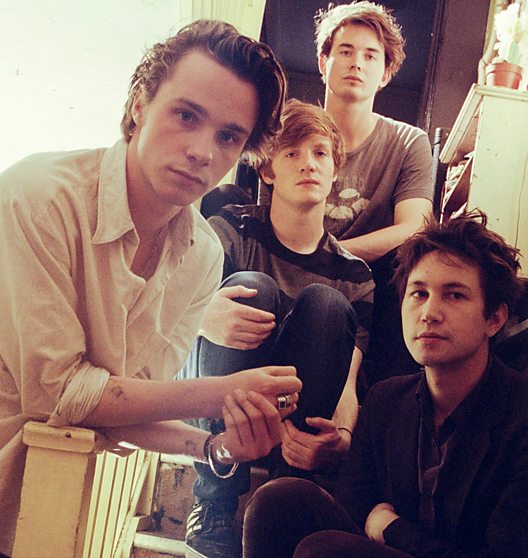Codes and Conventions of Indie Music Videos
1- Live Performance
The first code and convention I will discuss is the tendency of indie music videos to use live performance in their music videos. An immediate example of this is the Arctic Monkeys breakout song, "I Bet That You Look Good On The Dancefloor', which is all performance.
Clearly this convention is used to show the indie artists passion for performing and the fact that they are in it for the music- not for the fame that typically more mainstream artists are in it for. It also shows they can actually play their own music- making them seem homegrown and not manufactured, like many mainstream artists.
Often both live performance and narrative are used, with the narrative breaking up the nonstop performance, as sometimes being strictly performance can make the music video seem dull.
Performance can also show that the band are skilled at what they do- seeing them performing seemingly live may attract an indie audience as they like to see that their favorite band can perform live.
We will probably not use performance in our music video, as it doesn't suit the style of the song we have chosen and we feel that an all narrative based music video will work more effectively
2 - Narrative
Many indie music videos may use an entirely narrative based music video. A good example of this is "Danny, Dakota and the Wishing Well" by A Silent Film, which is completely narrative focused.
Narrative is a convention used by an extremely wide range of music videos, as it can be applied to many different circumstances and artist images. A narrative video can be very memorable, and may, in many indie music video's cases, provide a message for the audience to decipher. It is a good way of making a music video stand out, as if you can do something fresh and never seen before it will guarantee interest, even if the actual song isn't very good. People who either haven't heard of the artist or dislike their music can still appreciate a good narrative focused music video, as they tell a story and aren't straight up performance, attracting an indie audience.
We will be using narrative as the key part of our music video, as it is entirely narrative based. Our video will also try to send the viewer a message, and leave them wondering exactly what happened. Hopefully this will make it stand out from the crowd.
3- Mise- on- scene
Mise-on-scene is another crucial part of an indie music video. An example of an indie music video with good mise-on- scene is 'Cousins' by Vampire Weekend, which utilises props to portray the lyrics of the song
Many artists in the indie-rock genre have a very retro look, such as Parma Violets. This is to distinguish them from the mainstream, and make them seem unaware of current music trends and fashions, and clearly all about the music.
Props are also very important and often used in indie music videos, such as in the song above, where props have been used to depict the songs lyrics. Often the instruments used by the band are stylised and made to look retro and help to distinguish from more modern instruments like DJ decks. The fact that mainly the standard band layout of guitar, bass, drums is used in indie music also shows that they are all about the music, and don't believe in the manufacture of music.
Our music video will utilise props and mise-on-scene to further enforce our focus on narrative, by realistically representing our characters and setting. This will hopefully make our video immersive and realistic.
4 - Editing
Editing is also crucial in the representation of an indie band in a music video. Many indie music videos utilise a 'retro' feel to their video, an example being 'Reptilia' by The Strokes. This effect and feel to the music video again helps to add to the idea that the band play their own music and are not manufactured.
Rhythmic editing is often used to sync the music's beat to the clips shown in the video. This is crucial in music video's in general, as a good piece of rhymical editing can tie the music video together and make it seem like the video is to the song, and not just a random lot of clips thrown together.
We will look to use rhythmic editing in our music video, as it will help to make sure our song syncs with our video. We will probably not use a retro feel, as it wouldn't suit our narrative.

No comments:
Post a Comment